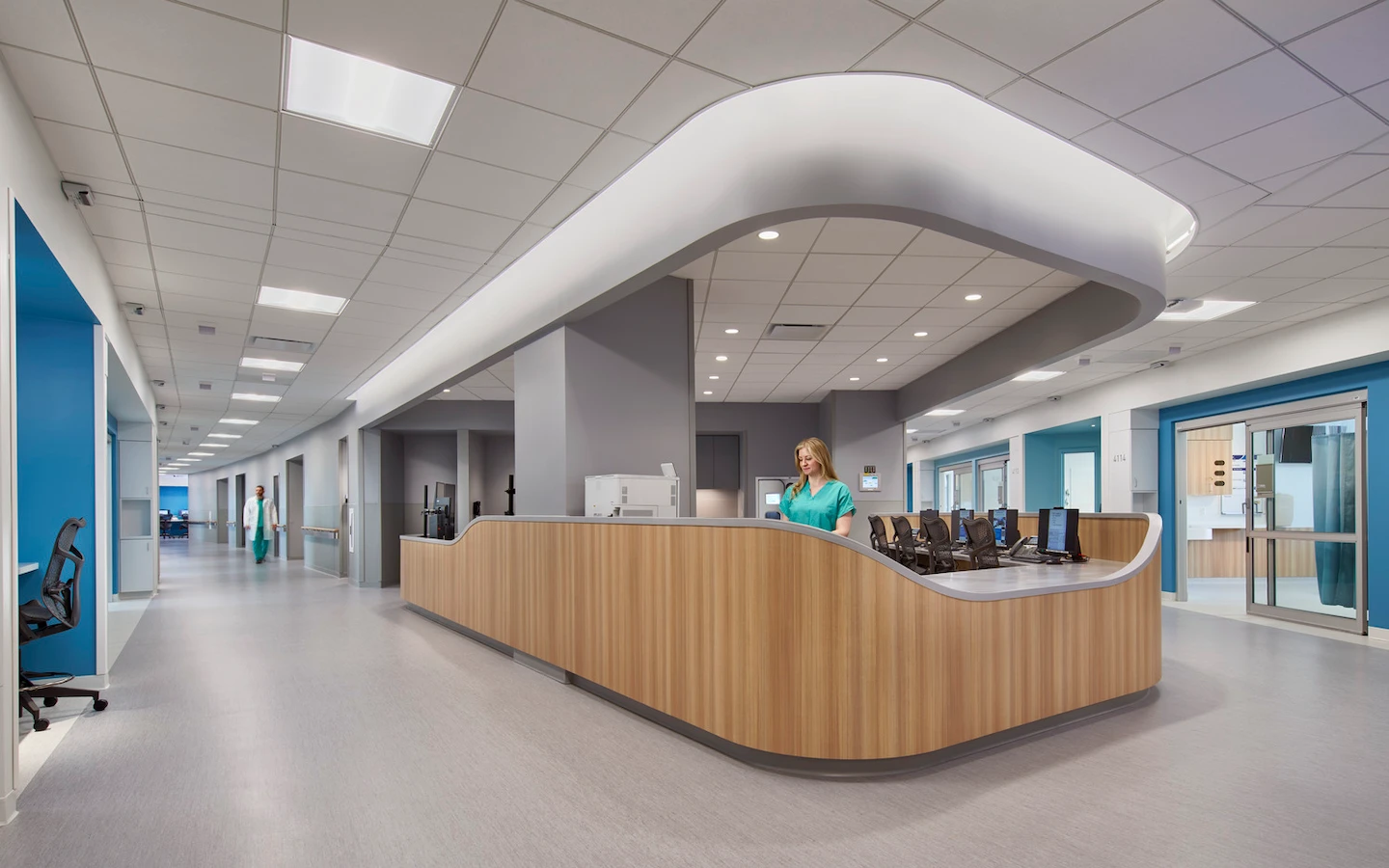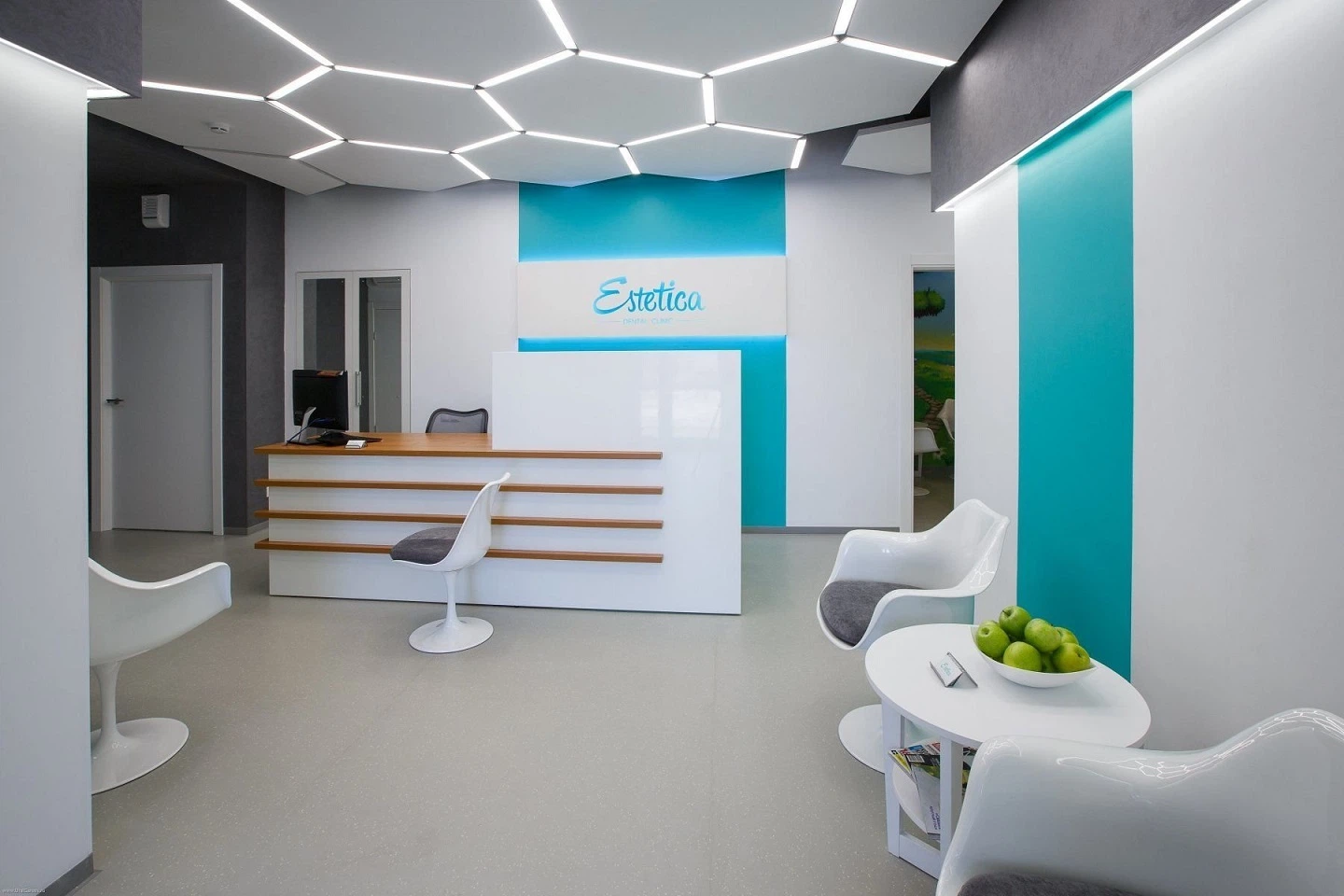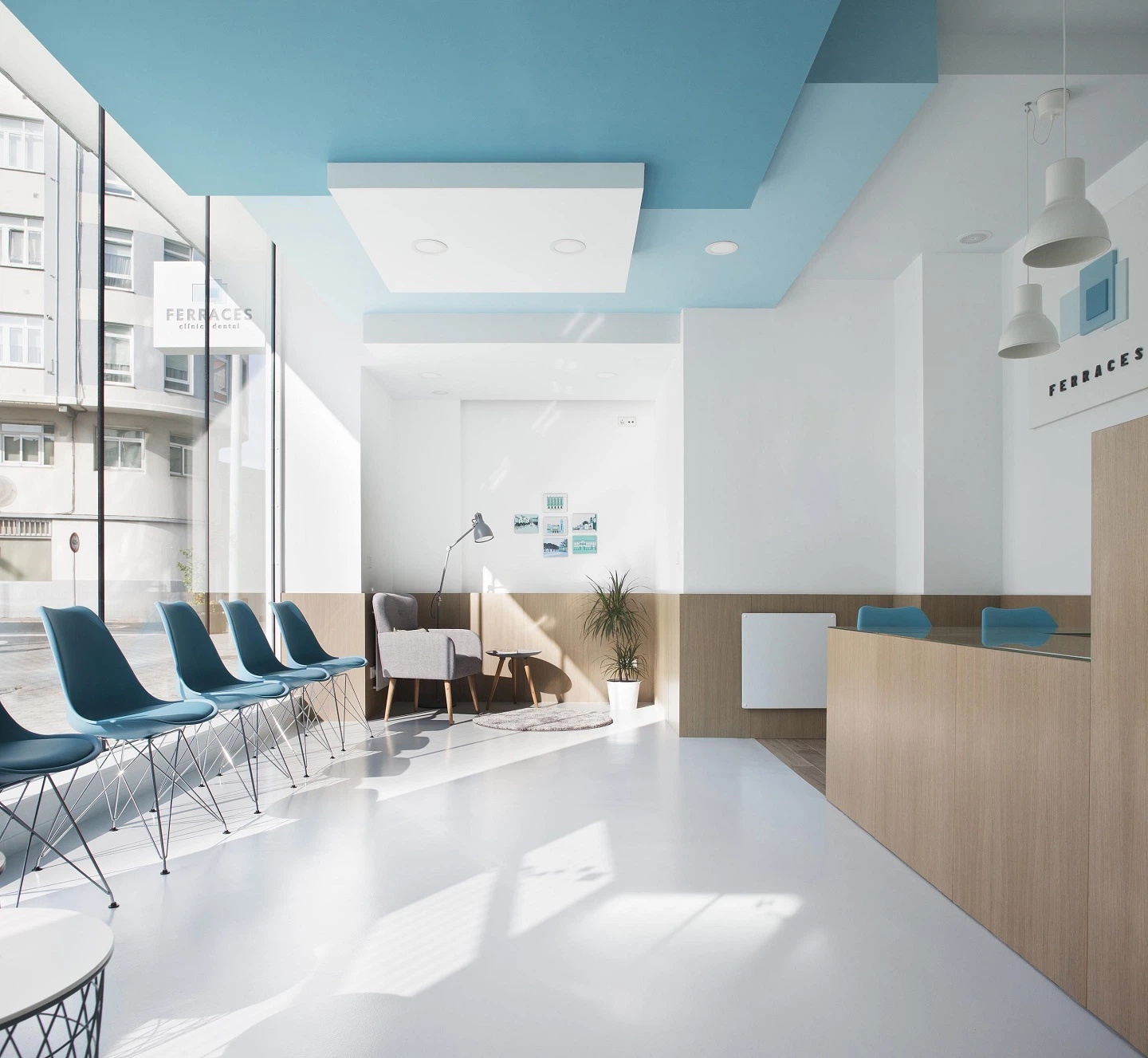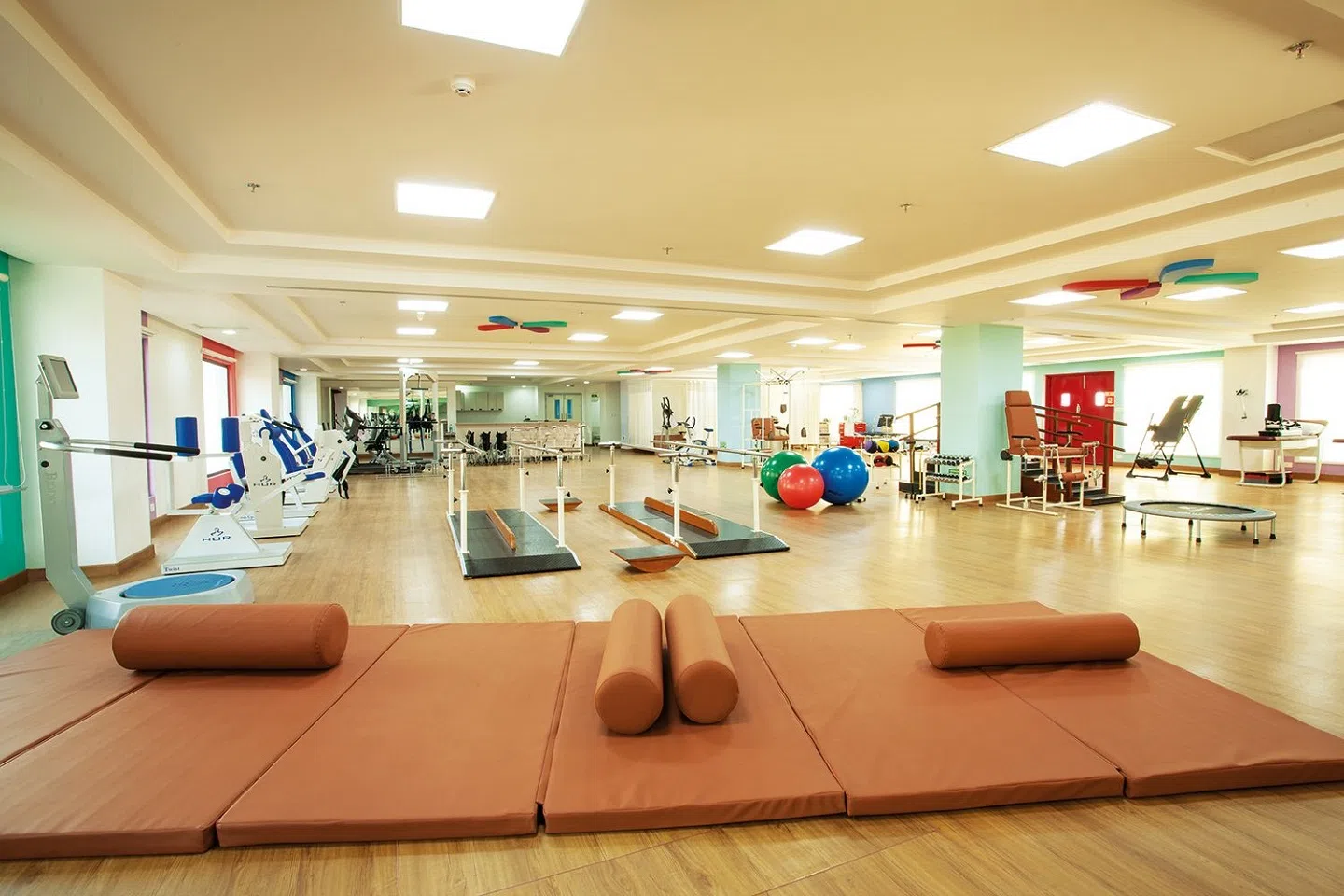Designing Medical Clinics: Striking a Balance Between Comfort, Practicality, and Visual Appeal

Patients often link healthcare environments with a harsh, unwelcoming feel, contributing to unease and worry. Yet, the evolution of clinic interior design is dispelling this notion, breathing new life into these spaces with designs that promote ease, recuperation, and confidence. In this piece, we delve into the principles of clinic interior design, with particular emphasis on dental clinics, small clinics, and medical clinics.
Designing Dental Clinics: Building an Environment that Encourages Smiles

The design of dental clinics carries a unique responsibility: to alleviate the common fears related to dental treatments. A thoughtful interior design can significantly reduce this “dental anxiety” and turn appointments into more enjoyable encounters.
Tip: What is the best home office flooring?
The Art of Distraction Through Design
Design is key in drawing the patient’s attention away from potential unease or worry. An open-plan space with lots of natural light can make the room seem less daunting, while visually appealing elements like art pieces or a tranquil color scheme can offer positive distractions. Waiting areas that feature aquariums or interactive components can engage children and adults alike, helping to diminish their anxiety before the procedure.
Comfort During Procedures and Functional Design
The design of the dental operatory should put patient comfort and procedural efficacy at the forefront. Dental chairs that prioritize ergonomics, conveniently located equipment for easy access, and an overall soothing color theme can all help ease patient tension. Integrating tech innovations such as ceiling-mounted TVs or VR headsets can facilitate a multi-sensory experience, promoting patient relaxation.
Tip: If you have a small office, but you don’t know how to design it to look modern, we have tips for you to build a small modern office.
Designing Small Clinics: Optimizing Efficiency within Compact Spaces

Small clinics often grapple with fulfilling diverse functions within a constrained area. As a result, their interior design must skillfully strike a balance between functionality, aesthetics, and patient comfort.
Smart Use of Space
Leveraging vertical space, introducing multiuse furniture, and opting for an open layout can generate a sense of spaciousness. Careful orchestration of the patient’s journey, from the waiting area to examination rooms and onward to the pharmacy or exit, can minimize crowding and enrich the patient experience.
Design with the Patient in Mind
Small clinics should emphasize a patient-centered design that radiates warmth and familiarity. A home-like décor, including indoor plants, cozy seating, or residential-style lighting, can help patients feel more relaxed.
Tip: We also have tips for you to choose what kind of medical flooring base on your working environment and visitors.
Designing Medical Clinics: Cultivating a Healing Environment

Medical clinics cater to a broad spectrum of patients, which makes their designs more intricate and sensitive. In order to create a healing environment, their interiors should convey professionalism, comfort, and reassurance.
Accessibility and Navigation
Accessibility should be a fundamental consideration in medical clinic design. Clear signage, easily navigable passages, and wheelchair-accessible layouts are essential. Designing separate zones for various services (like diagnostics, consultation, and treatment) assists in smooth patient traffic.
Cleanliness and Material Choices
With increased vigilance stemming from global health concerns, material choices in medical clinics must emphasize cleanliness. Surfaces must be effortless to clean and disinfect, incorporating antimicrobial features where possible. Non-porous materials, such as stainless steel and quartz, are favored for countertops, while vinyl flooring provides both durability and ease of maintenance.
Aesthetics and Nature-Inspired Design
An aesthetically pleasing clinic can uplift spirits and foster a positive mindset. Natural elements, or biophilic design, can be significantly beneficial. Introducing nature via indoor plants, natural light, and nature-themed artworks can alleviate stress and encourage healing.
Designing Pediatric Clinics: Building a Wonderland for Children

Pediatric clinics require a special approach to interior design, emphasizing a child-friendly environment that fosters a sense of delight and security.
The Power of Storytelling
Implementing a theme-based design narrative can turn the clinic into a thrilling space for children. Using vibrant colors, whimsical motifs, interactive wall art, and playful furniture can create a fun-filled atmosphere, transforming a potentially daunting visit into a captivating adventure.
Designing for Children
Design elements should be tailored to a child’s physical dimensions and viewpoints. Lowered reception desks, child-sized furniture, and toys within reach all add to a child-friendly environment. Providing privacy in certain areas, such as nursing or diaper changing rooms, can improve comfort for parents and caretakers.
Designing Alternative Medicine Clinics: Inspiring Peace and Equilibrium
Interior design for alternative medicine clinics, such as acupuncture, naturopathy, or chiropractic practices, should reflect their holistic view of health.
Infusing Cultural References
Integrating cultural components relevant to the practice can create an authentic ambiance. For example, a yoga studio might showcase Indian influences, while an acupuncture clinic might reflect Chinese design inspirations.
Tranquil Spaces and Sensory Encounters
The design should inspire a feeling of tranquility and balance. Natural materials, Zen gardens, water elements, and calming music can create a sensory experience that fosters relaxation and healing.
Designing Rehabilitation Clinics: Paving the Road to Recovery

Rehabilitation clinics support patients on their recovery journey, which makes their design fundamentally about promoting resilience, hope, and physical advancement.
Combining Functionality with Inspiration
Rehabilitation areas must be designed to accommodate physical therapy and exercises, providing sufficient space, safety rails, and versatile equipment. Inspirational features, like success story displays or progress markers, can motivate patients.
Universal Accessibility and Adaptable Design
Rehabilitation clinics should exhibit a universally accessible design to accommodate patients with varying mobility levels. Adjustable furniture, wide corridors, ramps, and accessible restrooms ensure that each patient can comfortably navigate the space.
Conclusion
In exploring clinic interior design, we’ve traversed the distinct landscapes of pediatric, alternative medicine, rehabilitation, multi-specialty clinics, and clinic reception design. Each area demands mindful attention to specific requirements to create spaces that serve their functional roles while enhancing patient comfort and well-being.
In conclusion, the interior design of clinics can significantly shape patient experience and overall healthcare results. As we advance, the design of healthcare facilities should continue to progress, maintaining a balance between functionality, comfort, aesthetics, and innovation to meet the needs of an ever-evolving patient population. The dental, small, and medical clinics discussed in this essay are prime examples of this continuous transformation in healthcare design.



Did you find what you were looking for?